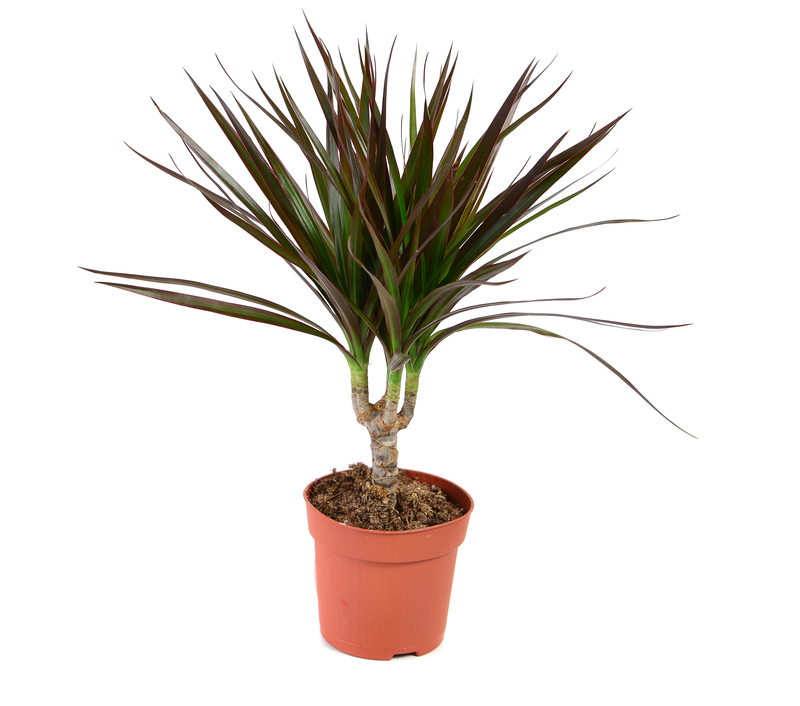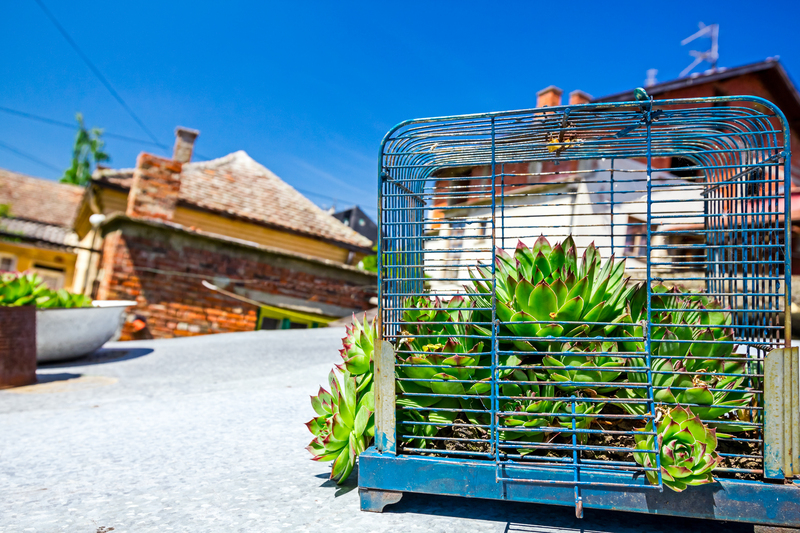9 Must-Know Gardening Secrets for Aspiring Green Thumbs
Posted on 21/08/2025
9 Must-Know Gardening Secrets for Aspiring Green Thumbs
Are you dreaming of transforming your backyard into a thriving garden oasis? Whether you're a beginner gardener or hoping to elevate your plant game, these gardening secrets will set you on the path to green thumb greatness. Get ready to nurture vibrant blooms, grow delicious vegetables, and create a garden you adore with our comprehensive guide.
Why Learn Gardening Secrets?
Gardening is more than just planting seeds and watching them grow. Behind every flourishing flower bed and bountiful vegetable patch lies a set of time-tested techniques. By mastering these must-know gardening tips, you'll set yourself up for success, save time and money, and enjoy the satisfaction of cultivating your own patch of paradise.
- Improve Plant Health: Healthy plants grow faster and produce bigger yields.
- Reduce Pests and Diseases: Well-maintained gardens are less prone to issues.
- Save Resources: Efficient gardening saves water, costs, and energy.
- Increase Joy: A thriving garden brings beauty and relaxation to your home.

1. Understand Your Growing Zone
Gardening success starts with knowing your climate. Each region has unique weather patterns, frost dates, and environmental challenges. The USDA Plant Hardiness Zone Map helps gardeners identify which plants will thrive in their area, taking the guesswork out of plant selection. For beginner gardeners, choosing species suited to your growing zone greatly boosts the chances of a lush and productive garden.
- Check your hardiness zone online or through local gardening centers.
- Select seeds and plants labeled for your area.
- Adjust planting times based on average last and first frost dates.
Extra Tip: Speak with local gardening experts or neighbors for insights into choosing resilient plant varieties in your region.
2. Master the Art of Healthy Soil
Great gardens grow from the ground up. The secret behind vibrant flowers and prolific vegetables is often nutrient-rich soil. Healthy soils provide vital minerals, retain moisture, and support beneficial microbes that help plants flourish.
Steps to Prepare and Improve Your Garden Soil:
- Test Your Soil. Use a soil testing kit to check pH and nutrient levels. Most vegetables prefer slightly acidic to neutral soil (pH 6-7).
- Amend with Compost. Mix organic compost or well-aged manure to add nutrients and improve structure.
- Loosen the Soil. Aerate by tilling or using a garden fork to help roots penetrate and absorb nutrients.
- Apply Mulch. Organic mulches suppress weeds, retain moisture, and gradually enrich the soil as they break down.
Best Soil Amendment Materials:
- Composted leaves
- Well-rotted manure
- Peat moss (sparingly)
- Perlite or vermiculite for drainage
3. Water Wisely: Techniques & Timing
Overwatering and underwatering are the most common mistakes made by new gardeners. The key is *consistency* and *efficiency*. Most plants prefer deep, infrequent watering over frequent shallow irrigation--this encourages roots to grow deeper and become more drought-tolerant.
Watering Tips for a Green Thumb:
- Early Morning is Best: Water before the sun is strong to minimize evaporation.
- Soak the Root Zone: Target the soil around the base of plants, not the leaves.
- Use Soaker Hoses or Drip Irrigation: Delivers water directly to roots and reduces waste.
- Check Soil Moisture: Stick your finger 2 inches into the soil--if it's dry, water thoroughly.
Bonus secret: Mulching can reduce your garden's water needs dramatically!
4. Choose the Right Plants and Companions
Picking the appropriate plants for your space is essential--but did you know some plants thrive even better when paired together? This secret, called companion planting, maximizes yields, repels pests, and enhances flavors.
Steps to Smart Plant Choices:
- Start with Easy-Grow Varieties: Lettuce, radishes, marigolds, or nasturtiums are perfect for beginners.
- Mix Tall and Short Plants: Tall sunflowers shelter smaller herbs that prefer less sun.
- Use Companion Planting: Grow basil with tomatoes or carrots with onions for mutual benefits.
- Rotate Crops Annually: Avoid depleting soil by moving plant families to new spots each year.
Tip: Group plants with similar light and water needs for easy care and robust growth.
5. Feed, Don't Overfeed: Balanced Fertilizing
Every gardener wants lush, healthy plants--but sometimes, too much fertilizer can do more harm than good. Overfeeding encourages rapid, weak growth and attracts pests. Strive for a balanced approach to fertilizing.
Fertilizing Guidelines:
- Use Organic Fertilizers: Compost, worm castings, or fish emulsion provide steady, safe nutrition.
- Follow Package Directions: Avoid the urge to add extra 'just in case.'
- Monitor Plants Regularly: Yellow leaves or stunted growth can indicate nutritional needs.
- Feed at the Right Time: Early growth, after planting, and during high-yield periods works best.
Remember, healthy soil often reduces the need for frequent fertilizer!
6. Keep Pests and Diseases at Bay - Organically
Pest management can feel daunting, but the healthiest gardens often skip synthetic chemicals. Embrace organic pest control for sustainable and safe gardening. Encouraging biodiversity and natural predators, as well as using simple solutions, goes a long way.
Natural Pest Management Secrets:
- Attract Beneficial Insects: Ladybugs, lacewings, and bees eat common pests.
- Use Neem Oil or Insecticidal Soap: Great for aphids, mites, and more.
- Rotate Crops: Helps break pest and disease cycles.
- Hand-pick Pests Early: Remove large pests before they multiply.
- Encourage Birds: Install birdhouses to attract natural pest controllers.
Never underestimate the power of healthy plants! Vigorous, well-cared-for plants naturally resist disease and pests better.
7. Prune, Deadhead, and Harvest Regularly
Pruning and harvesting are essential yet overlooked secrets for gardeners. Regular care encourages more blooms, prevents disease, and leads to more consistent harvests. Get comfortable with trimming, deadheading, and snipping for the best growth.
- Prune for Shape and Health: Remove dead, diseased, or crossing branches.
- Deadhead Flowers: Snip off fading blooms to encourage more blossoms.
- Harvest Vegetables Promptly: Picking produce stimulates further growth and better taste.
Clean, sharp pruners make the job easier and safer for both you and your plants!
8. Plan for Seasonality & Continuous Planting
*Many new gardeners only plant in the spring, but with a little planning, you can harvest fresh produce and flowers for much longer.* Stagger plantings and choose early, mid, and late-season varieties for a garden that grows year-round.
- Succession Plant: After one crop finishes, plant another in its place.
- Grow Cool and Warm Weather Plants: Lettuce and peas thrive in spring/fall, while tomatoes and squash love summer heat.
- Protect Against Frost: Use row covers or cloches to extend the growing season for sensitive plants.
Your garden can keep you supplied with fresh food and blooms almost all year!
9. Keep Learning & Enjoy the Journey
The final gardening secret is simple: Never stop learning, experimenting, and enjoying the process. There will be successes and failures, but every season brings new insights. Connect with fellow gardeners, read trusted gardening blogs, or join local clubs to deepen your knowledge and inspiration.
- Keep a Garden Journal: Track what works, what doesn't, and your favorite varieties.
- Celebrate Every Milestone: From your first sprout to your biggest harvest, take pride in your progress!
- Experiment Fearlessly: Try new crops, garden layouts, or growing methods each year.

Frequently Asked Questions About Gardening for Beginners
What are good plants for first-time gardeners?
Start with hardy, low-maintenance choices like marigolds, zinnias, sunflowers (flowers), or lettuce, radishes, and green beans (vegetables). Herbs such as basil, parsley, and chives are easy and rewarding as well.
Should I garden in the ground or in containers?
Both methods work well. Container gardening is ideal for small spaces or poor native soil, while in-ground beds let you grow larger quantities. Raised beds offer a happy medium by improving drainage, reducing weeds, and allowing you to control soil quality.
How much time does gardening require each week?
Set aside a minimum of 15-30 minutes several times a week for watering, weeding, and basic care. More time is needed for larger gardens or during peak planting and harvesting seasons.
Conclusion: Your Green Thumb Awaits
Gardening is a rewarding journey filled with learning, growth, and joy. By mastering these nine gardening secrets for aspiring green thumbs, you're already on your way to cultivating thriving plants and an awe-inspiring outdoor space.
- Know your climate and soil
- Water and feed thoughtfully
- Choose companions and practice organic care
- Engage in ongoing learning and enjoy every harvest
Ready to dig in? Grab your gardening tools, follow these gardening tips for beginners, and get ready to watch your green thumb--and your confidence--grow!

